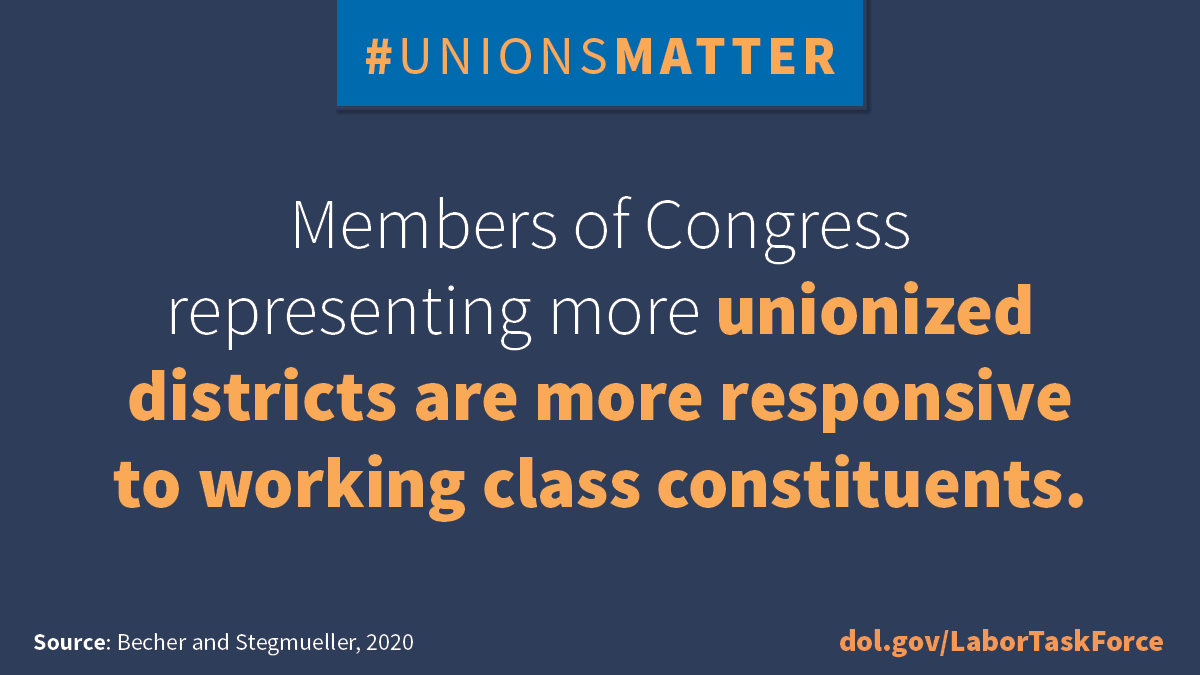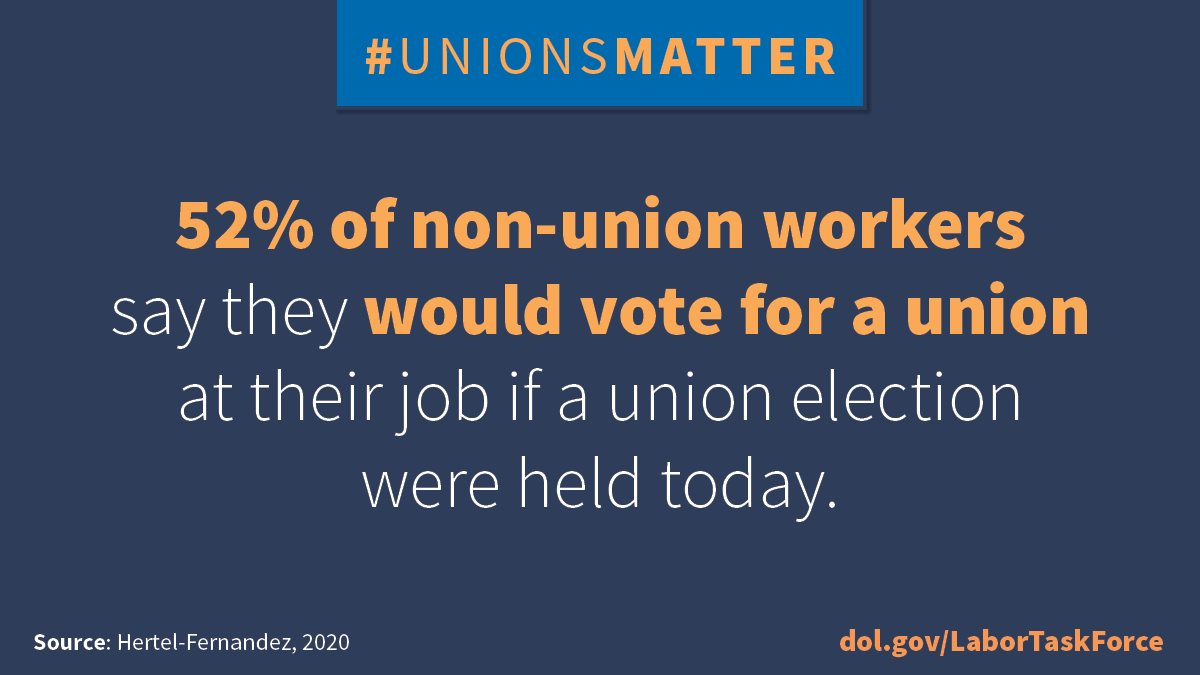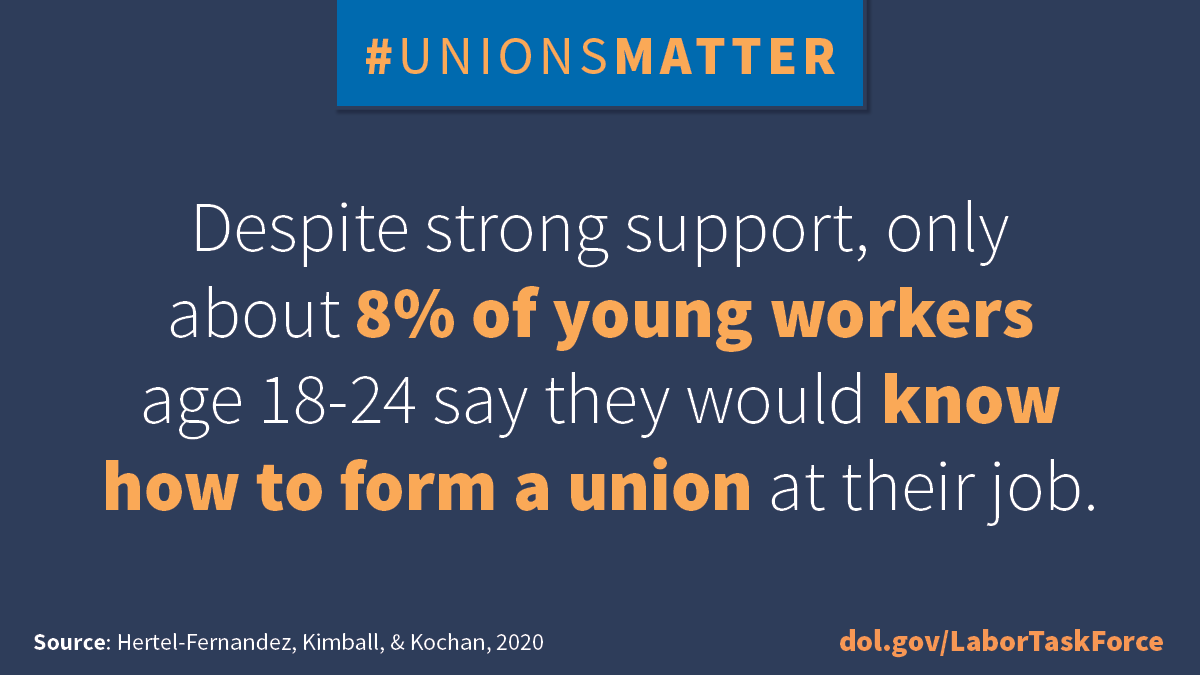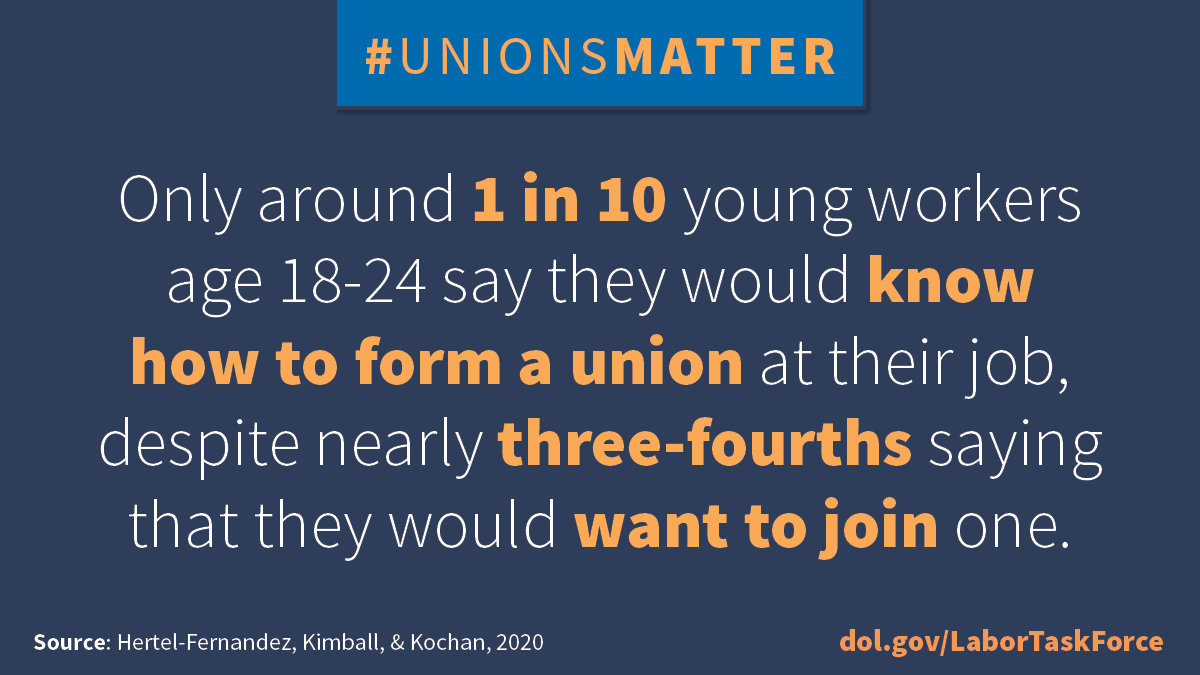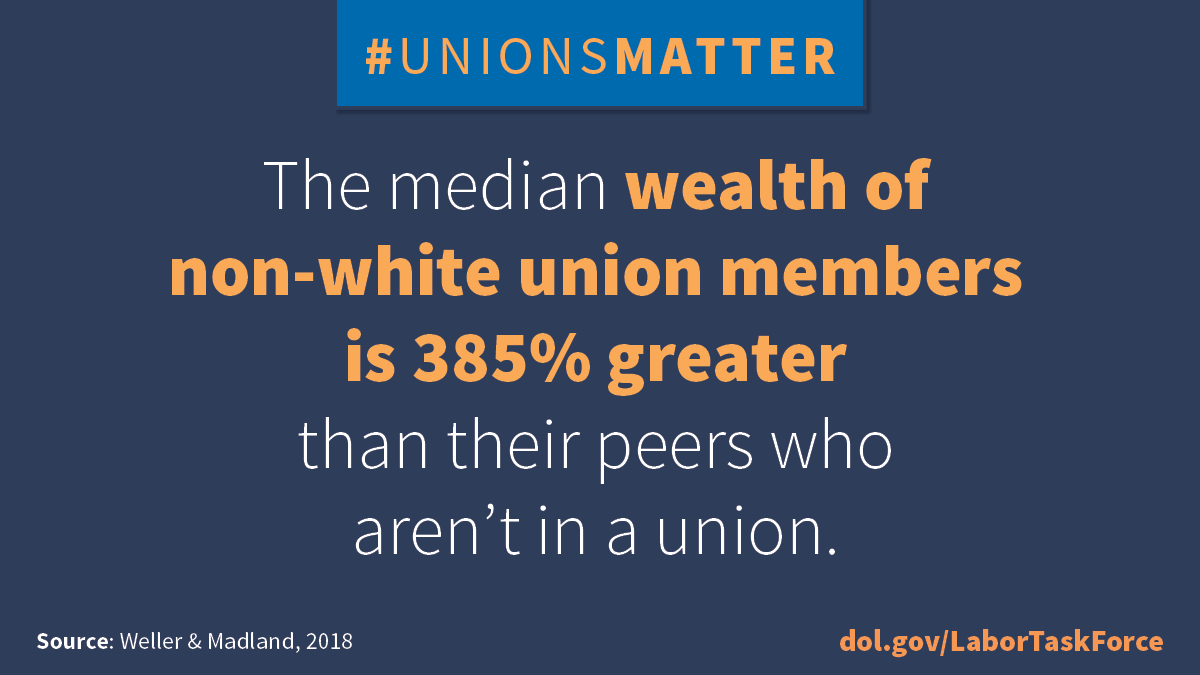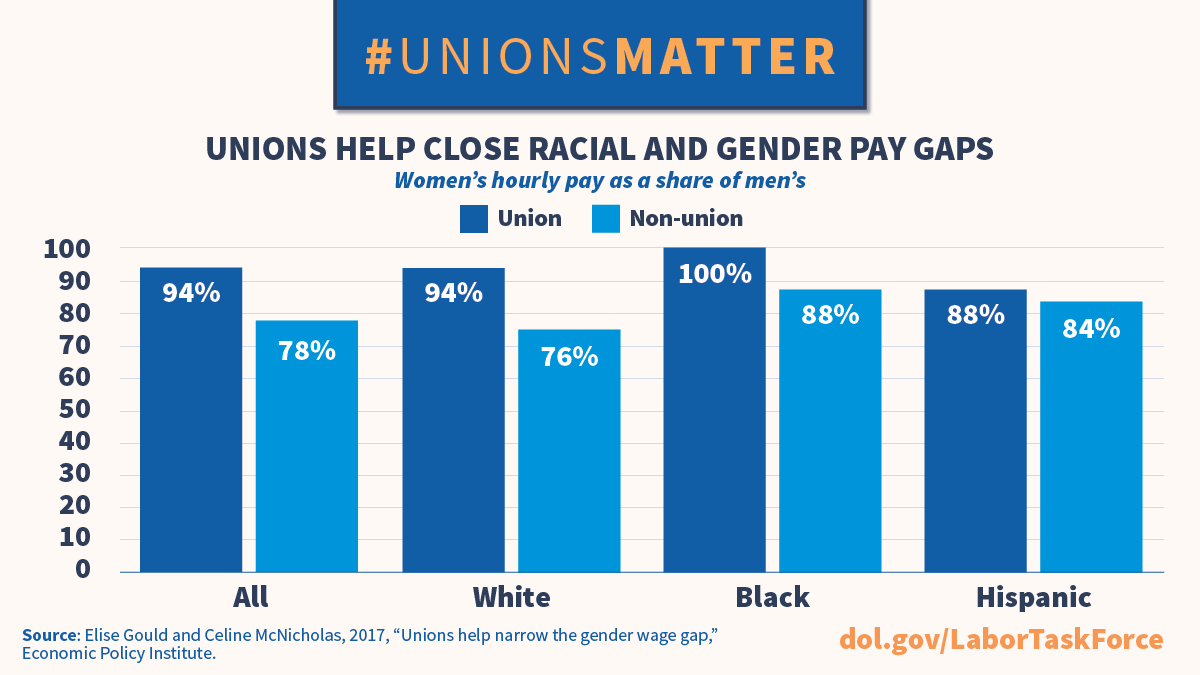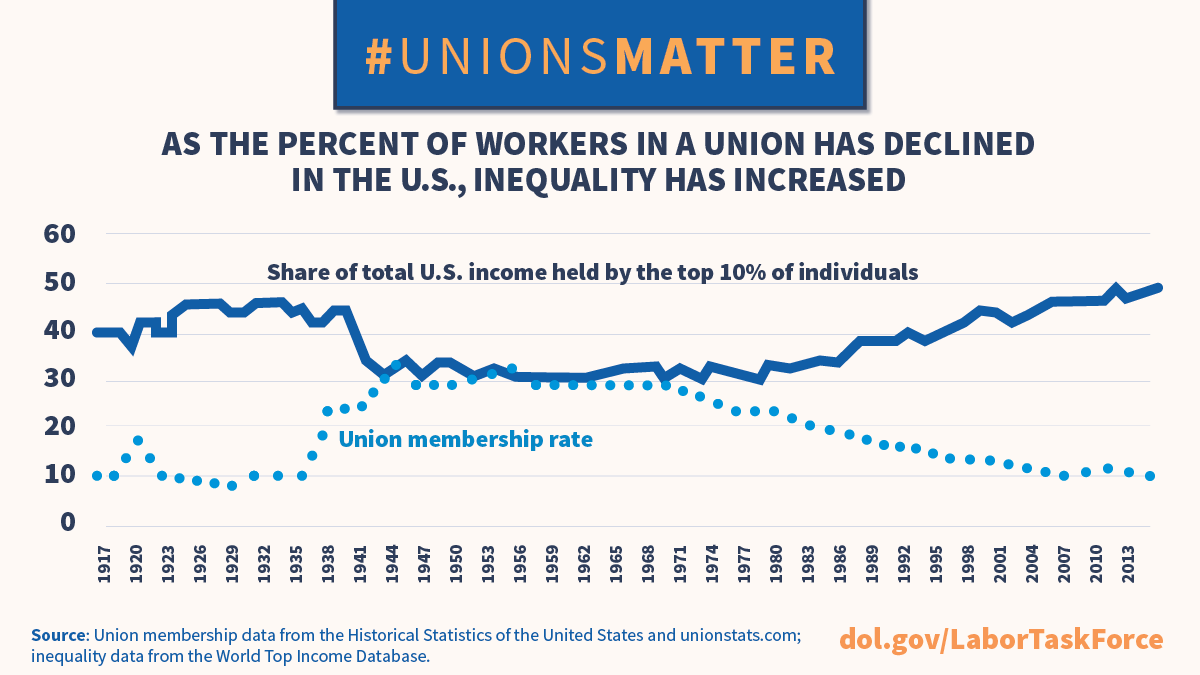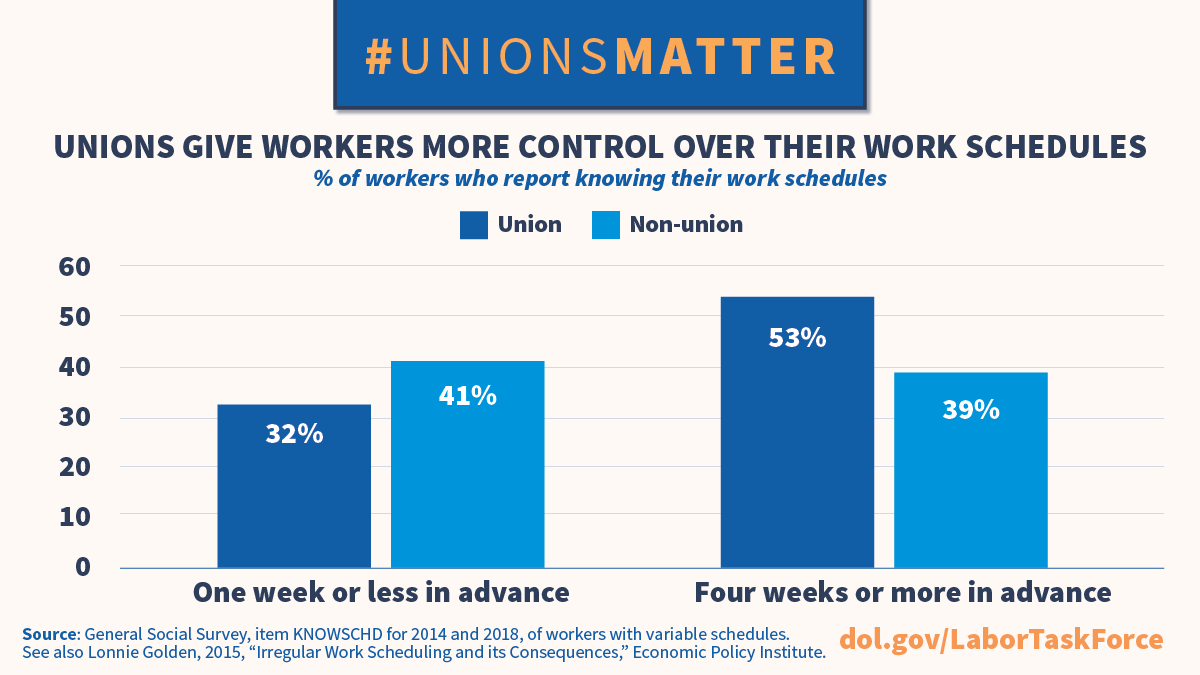Background
In April 2021, President Biden issued an executive order establishing the White House Task Force on Worker Organizing and Empowerment. Chaired by Vice President Kamala Harris and vice chaired by Labor Secretary Marty Walsh, it includes more than 20 Cabinet members and heads of federal agencies.
As part of the order, the task force was asked to make recommendations to address how the government's policies, programs and practices can be used to promote worker organizing and collective bargaining. On February 7, the White House published a report detailing these recommendations. Below are key messages about the Department of Labor's role in the task force.
Social information
-
Twitter:
-
Facebook:
-
Instagram:
-
LinkedIn: U.S. Department of Labor
-
Hashtag: #UnionsMatter
Web links:
Key Messages
A new report from the @WhiteHouse Task Force on Worker Organizing and Empowerment highlights ways the government can promote worker organizing and collective bargaining: www.dol.gov/LaborTaskForce #UnionsMatter
The @WhiteHouse Task Force on Worker Organizing and Empowerment asked more than 20 heads of White House and government agencies to find ways to help more workers organize.
Here's how they're taking action: https://www.dol.gov/sites/dolgov/files/OPA/newsreleases/2022/02/OSEC20220195.pdf #UnionsMatter
.@USDOL is empowering workers to organize by:
- Shedding light on anti-union tactics
- Ensuring workers know their organizing rights
- Protecting them against illegal retaliation
And more: www.dol.gov/LaborTaskForce #UnionsMatter
As @POTUS has said, America was built by the middle class, and unions built the middle class.
@USDOL is taking action to empower all workers who want to join a union, organize and collectively bargain with their employers: www.dol.gov/LaborTaskForce #UnionsMatter
60 million non-union workers say they would join a union if given the chance.
Here's how @USDOL is working with the @WhiteHouse to empower workers to organize: www.dol.gov/LaborTaskForce #UnionsMatter
FACTS:
- 52% of non-union workers
- 61% of women workers
- And nearly 75% of workers 18-24 say they would vote for a union if an election was held today
How @USDOL is helping more workers organize: www.dol.gov/LaborTaskForce #UnionsMatter
In 2021, union members made up jus 10.3% of the U.S. workforce, down from more than 30% in the 1950s. This is bad for our economy and our democracy.
Here's how the government is taking action to help more workers join unions: www.dol.gov/LaborTaskForce #UnionsMatter
The decline in union representation in the U.S. has contributed to:
- Economic inequality
- Stagnant wages
- A shrinking middle class
Here's how @USDOL is empowering more workers to organize: www.dol.gov/LaborTaskForce #UnionsMatter
Many young workers who want to join unions face barriers to organizing from employers who interfere with their choice.
@USDOL is shedding light on these practices www.dol.gov/LaborTaskForce #UnionsMatter
Workers in unions earn higher wages and have greater job and economic security. It's no surprise that more workers want to join unions.
A new report highlights how agencies like @USDOL are taking action to help more workers organize: www.dol.gov/LaborTaskForce #UnionsMatter
Unions help close racial and gender pay gaps for America's workers.
That's one reason why @USDOL is working to empower more workers to organize and bargain collectively with their employers: www.dol.gov/LaborTaskForce #UnionsMatter
Supporting worker organizing and collective bargaining will help advance equity across underserved communities.
Learn more about why #UnionsMatter for America's workforce and economy: www.dol.gov/LaborTaskForce
Throughout our history, unions have helped boost the civic participation of America's workers in our democracy.
Learn more about why #UnionsMatter for America's workforce and economy, and how you can get involved: www.dol.gov/LaborTaskForce
A new report from the White House Task Force on Worker Organizing and Empowerment highlights ways the government can promote worker organizing and collective bargaining.
Read this first-of-its kind report here: www.dol.gov/LaborTaskForce
Throughout our history, unions have lifted workers' voices in their workplaces and communities. But union density has been declining for decades, with devastating consequences.
Learn how the U.S. Department of Labor is working with the Biden-Harris Administration to help more workers organize: www.dol.gov/LaborTaskForce
The White House Task Force on Worker Organizing and Empowerment asked more than 20 heads of White House and government agencies to find ways to help more workers organize.
Here's how they're taking action: www.dol.gov/LaborTaskForce
The decline in union representation in the U.S. has contributed to:
- Economic inequality
- Stagnant wages
- A shrinking middle class
Here's how the U.S. Department of Labor is empowering more workers to organize: www.dol.gov/LaborTaskForce
The U.S. Department of Labor is empowering workers to organize by:
- Shedding light on anti-union tactics
- Ensuring workers know their organizing rights
- Protecting them from illegal retaliation
- Establishing a resource center on unions and collective bargaining
And more: www.dol.gov/LaborTaskForce
Many young workers want to join a union, but don't know where to begin.
Here's how the Department of Labor is taking action to ensure all workers can organize and bargain collectively with their employers: www.dol.gov/LaborTaskForce
Dear ___,
As President Biden has said, America was built by the middle class, and unions built the middle class. Yet despite the importance of unions to our economy and democracy, and nearly 60 million non-union workers today say they would join a union if given the chance, America's workers are facing increasing barriers to organizing.
That's why the Biden-Harris Administration took action and established the White House Task Force on Worker Organizing and Empowerment. The task force released a first-of-its kind report that includes recommendations for how the government can better support worker organizing and collective bargaining — including several from the U.S. Department of Labor that will play a critical role in empowering more workers to organize. These include:
- Shedding light on employers' use of anti-union consultants through an initiative led by the department's Office of Labor-Management Standards.
- Ensuring workers know their organizing and bargaining rights by leading efforts to make sure more workers are aware of their federally protected rights to organize and collectively bargain with their employers.
- Protecting workers who organize from illegal retaliation by addressing and preventing employer retaliation against workers who exercise their labor rights.
Through these actions and many more, the task force is putting the federal government's policy of encouraging worker organizing and collective bargaining into action. Because increasing union membership means a better quality of life for workers and their families, and a stronger economy and democracy for all.
Learn more about the task force and how you can get involved at www.dol.gov/LaborTaskForce.
Best,
[NAME]

